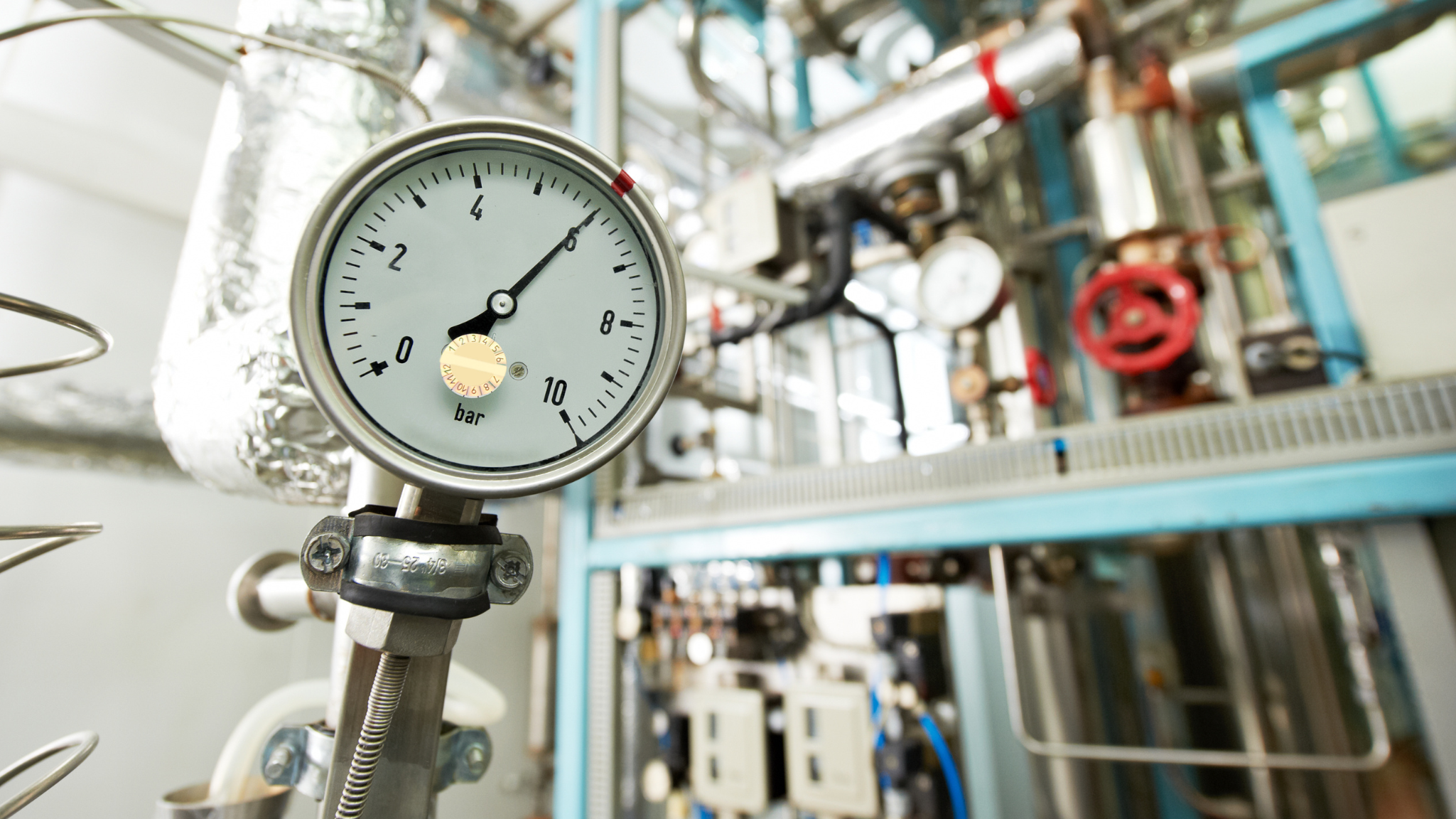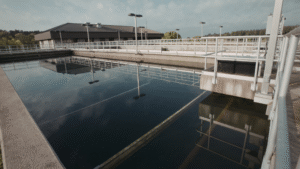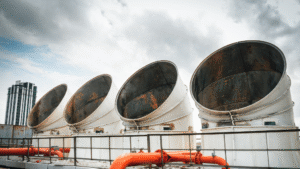Boiler systems are the backbone of many industrial operations, but they face a constant threat: dissolved oxygen. Even in small amounts, oxygen can cause corrosion, degrade metal surfaces, and lead to scale buildup that reduces heat transfer efficiency. Over time, these issues can result in increased maintenance costs, unexpected downtime, and shortened equipment lifespan.
To combat this, water treatment professionals use oxygen scavengers. This refers to chemical agents that remove oxygen from boiler feedwater and protect internal surfaces from oxidation. But not all oxygen scavenging solutions are the same. The right choice depends on system pressure, temperature, chemical compatibility, and operational goals.
In this article, we’ll explore the different types of oxygen scavengers for boiler systems. We’ll also explain how ETI supports water treatment professionals with custom formulations designed for safe, effective oxygen removal.
Why Oxygen Must Be Removed
Oxygen corrosion is one of the most destructive forces within a boiler system. When dissolved oxygen comes into contact with hot metal surfaces (especially those made of iron or copper) it serves as a catalyst for oxidation reactions that weaken the iron or copper material and form rust. Over time, this can lead to pitting, leaks, and even catastrophic failure of boiler tubes and pressure vessels.
These effects are amplified in systems with elevated feedwater temperatures, high steam demands, or frequent start-stop cycles. In low pressure boilers, corrosion may develop slowly, but it still reduces reliability and shortens equipment lifespan. In high pressure boilers, the consequences are more immediate and severe.
Even the most advanced mechanical deaeration systems cannot remove all oxygen from feedwater. That’s why chemical oxygen scavengers are critical: they eliminate residual oxygen and create a stable environment that protects both the boiler and condensate return system.
Types of Oxygen Scavengers and Their Applications
Choosing the right oxygen scavenger depends on boiler type, operating pressure, temperature, and regulatory considerations. Below are the most common formulations used in industrial water treatment.
1. Sulfite-Based Scavengers
Sodium sulfite is one of the most widely used oxygen scavengers for low and medium pressure boiler systems. It reacts quickly with dissolved oxygen to form sulfate, which is harmless in most boiler environments. These formulations are often used alongside mechanical deaeration to ensure complete oxygen removal.
Sulfite-based products are well suited for applications where rapid reaction is needed and where feedwater temperatures are moderate. However, they may contribute to increased total dissolved solids in the boiler water, requiring careful blowdown management.
Best for: Low pressure boilers, moderate feedwater temperature, fast oxygen removal
2. DEHA (Diethylhydroxylamine) Scavengers
DEHA is a volatile oxygen scavenger that offers both protection in the boiler and in the steam-condensate return system. It not only removes oxygen but also passivates metal surfaces, helping prevent future corrosion.
Because DEHA vaporizes with steam, it continues working throughout the system. It’s ideal for high pressure boilers and operations that require system-wide corrosion control without sulfate buildup.
Best for: High pressure boilers, condensate protection, volatile system applications
3. Erythorbate-Based Scavengers
Erythorbate is a food-grade alternative to traditional scavengers, making it ideal for applications where safety and purity are priorities. It provides effective oxygen control without contributing to sulfate or other residuals, and it’s compatible with sensitive systems in the food and pharmaceutical industries.
This type of scavenger also promotes passive film formation on metal surfaces, reducing the risk of oxygen attack.
Best for: Food and beverage processing, pharmaceutical systems, low-sulfate requirements
4. Hydrazine Alternatives
Hydrazine was once the standard for high-pressure systems, but safety and environmental concerns have driven demand for non-toxic substitutes. ETI offers alternative formulations that match hydrazine’s effectiveness without its health and handling risks.
These products are designed for extreme pressure and temperature environments and provide long-lasting protection against oxidation.
Best for: High temperature systems, environmentally sensitive facilities, regulated industries
Catalyzed vs. Uncatalyzed Scavengers: Which Is Right for You?
Beyond the base chemistry, oxygen scavengers are also classified as either catalyzed or uncatalyzed. The difference lies in how quickly and efficiently they react (serve as a catalyst) with dissolved oxygen.
Catalyzed scavengers include an added catalyst that accelerates the reaction rate. These are particularly useful during system startups, in low temperature conditions, or when oxygen levels fluctuate. Uncatalyzed scavengers, on the other hand, react more slowly and are typically chosen for stable, continuous operations where precise control and compatibility are more important than speed.
In our other blog, we had a comprehensive guide on choosing catalyzed vs. uncatalyzed scavengers. To go beyond the base chemistry, make sure to give it a review.
How ETI Helps You Select the Right Oxygen Scavenger
At ETI, we work closely with water treatment professionals to match each oxygen scavenger to the specific demands of their boiler systems. Our team begins with a detailed system assessment, evaluating feedwater chemistry, operating pressure, temperature, and oxygen load.
Based on this data, we recommend a tailored oxygen scavenger formulation treatment program designed for optimal performance and safety. Whether the system requires rapid response during startup, volatile protection for steam lines, or food-grade compatibility, we have solutions that meet both technical and regulatory needs.
Our oxygen scavenger products are available in liquid and powder forms, and we support a wide range of industries from power generation and manufacturing to food processing and pharmaceuticals.
Explore our oxygen scavenger solutions.
Protecting Your Boiler System with the Right Oxygen Scavenger
ETI offers a full range of oxygen scavengers designed to match your system’s specific needs. From fast-acting sulfite blends to food-grade erythorbates and hydrazine alternatives, our experts can help you find the best solution for long-term protection.
Talk to ETI’s water treatment specialists today and start building a treatment program that protects your boiler and keeps your system running reliably.
Frequently Asked Questions (FAQs)
1. Is an oxygen scavenger the same as an oxygen absorber?
While both terms describe chemicals that remove oxygen, oxygen scavenger typically refers to compounds used in boiler water treatment, whereas oxygen absorber is more commonly used in packaging to preserve product shelf life by removing oxygen from sealed environments.
2. What factors affect oxygen scavenging efficiency in boiler systems?
Several factors influence efficiency: water temperature, pH, residence time, oxygen load, and whether the scavenger is catalyzed. Matching the chemistry to your system’s conditions ensures maximum oxygen removal with minimal chemical use.
3. How is the proper dose rate determined?
The correct dose rate depends on the level of dissolved oxygen, system size, and operating pressure. Overfeeding can lead to unnecessary chemical costs or unwanted by-products, while underfeeding may leave the system vulnerable to corrosion.
4. Are all oxygen scavengers safe for use in food or pharmaceutical applications?
Not all products meet the product safety requirements for sensitive applications. Inorganic formulations like sulfite may not be suitable in these cases. ETI offers food-grade alternatives such as erythorbate-based products to meet regulatory standards.
5. Do oxygen scavengers remove other gases or moisture?
While oxygen scavengers are designed to target oxygen specifically, they do not eliminate moisture or other non-oxidizing gases. For broader control, other products or systems may be needed in conjunction with scavengers.
6. Can inorganic oxygen scavengers decrease total dissolved solids?
In most cases, inorganic scavengers like sulfites actually increase total dissolved solids (TDS). If minimizing TDS is a goal, facilities should consider low-residual or volatile alternatives that decrease TDS contribution.





